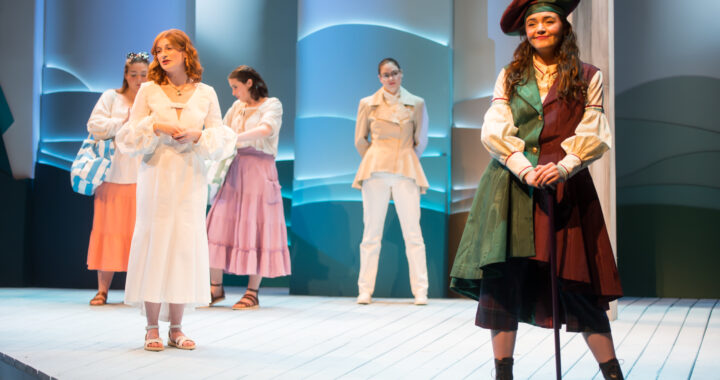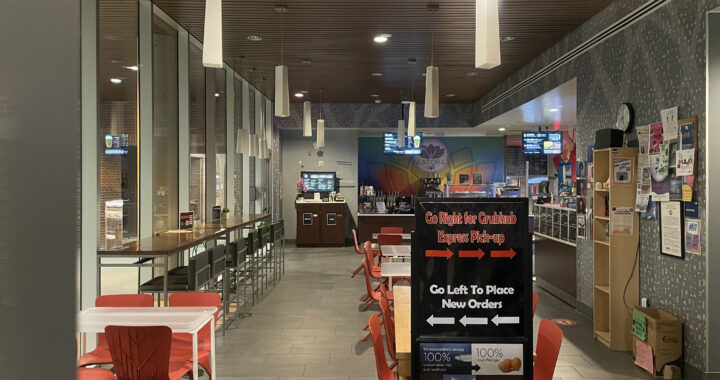Costume shop suits up for ‘Seascape’
3 min readWarning: Attempt to read property "post_excerpt" on null in /home/bgonline/public_html/wp-content/themes/newsphere-pro/inc/hooks/hook-single-header.php on line 65
Edward Albee’s “Seascape,” running at Klein Theatre through Feb. 19, presented the UMW Department of Theatre and Dance’s Costume Shop with unique issues and opportunities.
Two of the play’s four principle characters were sea monsters (though costume designer Kevin McCluskey noted that those involved with the show “lovingly call them lizards”) and, as such, required specially designed costumes tailored to the individual actors in the roles.
“[We] can’t go to the store and buy lizard costumes,” said McCluskey, who is also an associate professor in the theatre department. “[They were a] total collaboration of the artists that came together [to make them].”
Marilyn Wojdak, who runs the costume shop, and associate professor of theatre Julie Hodge worked with McCluskey for three to four weeks designing the lizard suits, creating the fabric for them and assembling them with input from actors and director Helen Housley.
“Each of the lizards took approximately 1,000 hours to make […] From start to finish, from testing to final painting, that is our estimate,” said Hodge.
According to Wojdak, who created the patterns for the suits from scratch, there were a total of nine students working in the shop for three to four weeks once the designs were approved.
“[This show exemplified the] best of what we do in this business, which is collaborate,” said McCluskey, who developed the initial concept for the lizard suits.
According to McCluskey, one of the reasons the department chose to produce “Seascape,” was to show students all of the different elements that go into designing a show.
Hodge focused on manipulating the fabric of each suit to resemble reptile scales. In order to do this, she used caulk, five to six different colors of paint and metallic foil applied on top of the paint so the suits would have the same light reflective qualities of an actual lizard.
“The real beauty of [the costumes] is how they’re detailed and decorated,” said McCluskey.
After finalizing the fabric with Housley and testing it under stage lights, Hodge worked with employees in the costume shop, who did the bulk of the work on the suits, as Hodge was also the show’s lighting designer.
Many of the people working in the costume shop are students with an interest in pursuing careers in the theatre, so a show like “Seascape” that required intricate design elements was a chance to give students a taste of what could be in store in the future, according to McCluskey.
“[We] teach [theatre] students how to move forward in that world,” said McCluskey. “[You] can’t teach students how to make costumes if you don’t make costumes.”
Although the show is in the middle of its two-week run, and the costumes are technically complete, Wojdak and the students in the costume shop are still hard at work. Following each performance, they must check the costumes to repair any damages and touch up the paint on the suits.
“Our job is to make sure the last audience sees them just as beautifully as the first one did,” said McCluskey. “Very few people understand the time that went into those.”
Although costumes for the more modern productions are adapted from clothes the design team finds in thrift stores, most of the pieces in period shows set before 1950 are created from scratch in-house, according to McCluskey.
He estimated that students made 95% of the costumes for last year’s production of “Romeo and Juliet” from scratch in the shop.
“We do really beautiful productions that sometimes belie the reality of what we have to work with,” said McCluskey. “[It’s] unique for a department the size of ours.”











